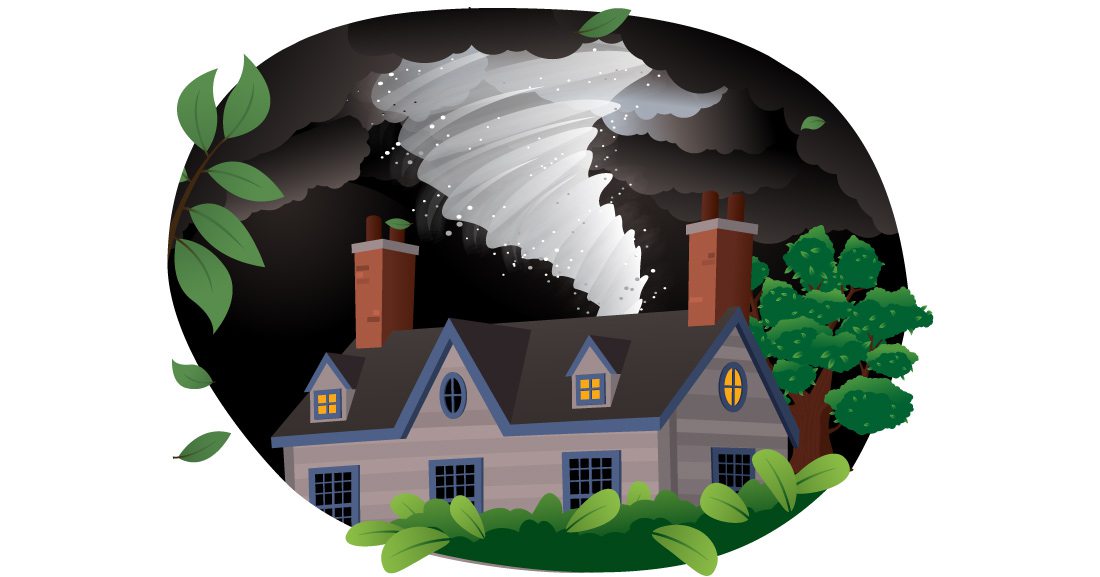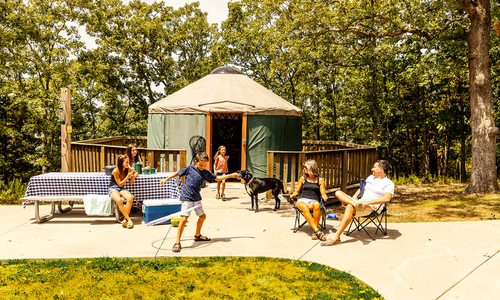Health
How to Prepare for a Tornado
April is the height of tornado season, and it’s important to be prepared for anything. We spoke to experts to make sure you know everything you need to do to stay safe and healthy when a twister touches down.
By Evan Greenberg
Mar 2018

The changing of seasons brings with it certain demarcations: flowers bloom, baseball is back. But it also means severe weather. April is tornado season, and it’s important to be aware of what exactly to do to prepare.
“For really any emergency through all seasons, we have four very simple tips,” says Erin Hedlun, the public information officer for the Springfield–Greene County Office of Emergency Management department. “Create a plan, build a kit, get connected, stay aware.”
Plan and Prepare
Creating a plan is perhaps the most important part of this—it’s the preemptive measure that serves as a guide to refer back to. “It’s really important to have an emergency plan in place,” Hedlun says. “It’s really important to involve your kids—if you have them—in the development and updating of your family plan. Include a meeting place. If you’re not able to get to your house, what’s a great meeting place that your whole family can meet up at?”
Hedlun recommends stocking your safe room with blankets, clothes and a first-aid kit. Steve Runnels, Warning Coordination Meteorologist of the National Weather Service of Springfield, adds that pillows—and anything to shield you from debris—are a good idea. Runnels also says purchasing a NOAA weather radio to “alert you whenever watches or warnings are issued for your county” is imperative. He adds his recommended spots to best wait out a storm: “When it comes to finding sufficient shelter, there’s nothing better than an engineered safe room that will withstand winds up to 200 mph. Basements are best. If you have a work bench or some other sturdy structure that you can get down below, that will increase your survivability.”
No Joking Matter
Runnels and Hedlun care deeply about educating people about severe weather and are fierce advocates in the community for raising awareness of the danger of emergency weather situations. However, Runnels, Hedlun and their colleagues can run into some problems. Because the threat of severe weather is omnipresent, the seemingly never-ending threat loses its potency. Essentially, because severe weather watches and warnings are so common and so often pass by without any substantial incident, they have become normalized, creating complacency. “The No. 1 thing that we see is somewhat of a sense of disconnectedness or apathy,” Hedlun says. “‘We live here in the Midwest; we have a lot of severe weather; and the tornado’s not going to happen here.’ We know that one tornado or one severe weather incident really can change your life.”
Runnels agrees and says that the biggest problem he sees is people being reckless in the face of an imminent storm. “The most common misconception is there’s always time to find out more information before a tornado arrives,” Runnels says. “We found out with the Joplin tornado that many people continued to seek additional information, even while the tornado was moving through their neighborhood. The misconception that we really want to dispel is waiting for final confirmation that their neighborhoods are in the path of that storm.” Hedlun combats this indifference by talking with neighborhood groups and students, stressing the importance of planning before instead of reacting to a storm.
The difference can truly be life and death. “Even in the deadliest May 22, 2011, Joplin tornado, people still survived that storm because they had identified the safest place to go,” Runnels says. “By being willing to go there without hesitation, lives are gonna be saved.”












